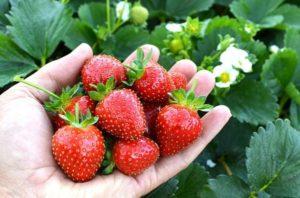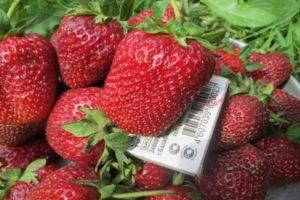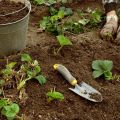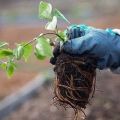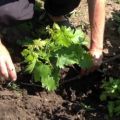When is it better to transplant strawberries to a new place in summer, autumn or spring
Strawberries are delicious and aromatic, very healthy. Each owner of the garden plot tries to grow this useful berry. Only by observing all the intricacies of cultivation, reproduction and transplantation, one can hope for a harvest. Many people wonder when and at what time to transplant strawberries. Plant transplantation and timing have their own subtleties, on the observance of which the health of the bushes, the weight of the berries depend.
Why transplant strawberries
Strawberry bushes bear fruit actively for 3-4 years. Then the bush "grows old", the berries become small, the yield decreases. We need a garden strawberry transplant to rejuvenate the plantation. Diseases and pests can also accumulate at the site of growth. Transplanting to another location will prevent the threat of harmful bacteria from contaminating weakened plants.
When is the best time to transplant to a new location
A moderately warm and rainy weather allows for replanting at any suitable time. Spring transplanting begins in April, after the appearance of young leaves. In the summer, you can do a transplant after harvest.
Autumn planting can last two months, but the last transplantation time is three weeks before the first frost.
Advantages and disadvantages of a spring transplant
In the spring, you can plant new varieties of strawberries purchased from horticultural farms. During the summer, the plant adapts well to new conditions. It is recommended to cut flowers and whiskers in the first season.
Preparing the beds for plant transplanting in spring begins in early autumn. The soil is dug up with the introduction of rotted manure. Chicken droppings are the best for this. Until winter, the garden bed is periodically weeded out or sown with siderat (phacelia). Siderat can be left before winter, without processing.

Garden strawberries are transplanted when the first leaves turn green and the air temperature rises to +20 °. A good time for this work is cloudy weather or the afternoon. The leaves show the state of the overwintered bush. Large bushes can be divided and transplanted to a new location, in the filled and fertilized pits. The first season, the harvest will not be weighty enough, the berries may be small. Only next year will the plant give a full harvest.
Summer transfer
In the summer, the hot weather is difficult.Transplanting can be carried out after harvest, in August, as well as transplanting flowering strawberries and green berries, but additional watering.
A flowering bush is dug out with a clod of earth, without damaging the roots, and transferred to a prepared, moist hole. Such transplants need to be covered with agrofibre during the daytime heat in July and August, as well as additional watering. The mustache is trimmed, a week after the transplant, the plants are fertilized with a liquid herbal infusion.
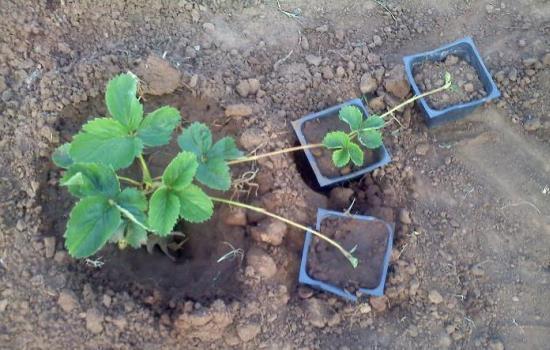
Pros and cons of transplanting in the fall
The most optimal time for transplanting is the time of the autumn season. After fruiting, the bushes gain strength, throwing out new leaves and mustaches. Autumn transplantation begins in early September and lasts until the end of October. Before winter, the plant has time to take root and lay flower buds for the next year's harvest. For the winter, the beds are covered with agrofibre, marigold branches, wormwood. The shelter will protect plants from severe frost, wormwood from pests. In the spring, in the month of April, strong seedlings begin to develop, and with proper watering and fertilization, they give a full harvest.
Transplant methods
Transplanting strawberries is carried out in two ways:
- "Mustache";
- "Mustache", dividing the bush.

"Mustache" transplant
After the return of the crop, a mustache with rosettes of young plants grow near the bushes. In order not to deplete the plants, several bushes are selected for reproduction under the queen cells, and mustaches are cut out on the rest.
Important: for "mustachioed" reproduction, the sockets must be taken from two-year-old mother plants, preferably the first from the bush.
They repeat the parameters of the mother bush and bear fruit in the following year. Young rosettes are pressed against damp ground for rooting using small hairpins. Further care consists in watering and weeding. Rooted sockets are transplanted to a new bed.

If a transplant is planned for a small plantation, the rosettes are immediately identified in 200-gram plastic cups with soil. By watering them, you can visually assess the degree of root development, they can be seen in a transparent glass. In early September, it will be possible to transplant a fully developed plant from a glass with a 100% guarantee of survival.
Mustache-free transplant
For transplanting yearling plants, the division of the bush is used. The bush should be dug out, divided into parts with buds with a sharp knife. Before planting, hold the prepared seedlings in Zircon solution for better root development. The seedling is transplanted to the prepared bed, watered and shaded.

How to properly transplant strawberry seedlings
In the spring, loosen the bed and mark the planting sites. The width between the rows is stable - 1 meter. The width between the bushes is 35-50 centimeters, depending on the variety (varieties of large strawberries occupy large areas for food). Pits are dug on the bayonet of the shovel and spilled with Zircon.
This drug, diluted according to the instructions, disinfects nitrates in the soil and stimulates the growth and development of plant roots. It is necessary to additionally add to each hole a matchbox of ash, a teaspoon of ammonium nitrate.
Important! Do not apply large amounts of fertilizer at once. Overdose leads to root burns or "fattening" of foliage without ovary.
Choosing and preparing a new location
For transplanting strawberries, a sunny place is chosen, without drafts. Good predecessors matter:
- peas;
- beans;
- garlic and onions,
- carrot;
- leafy salads.

You can not use for transplanting a bed where nightshade crops grew. After them, harmful "baggage" remains in the soil, after which fungicide pickling is applied, which is undesirable for growing berries.
Transplant technology
Transplanting begins with the selection of seedlings. You can grow them yourself, purchase them at horticultural centers.Upon purchase, a certificate of plant quality is provided, you can get advice from a specialist on further care for the purchased variety. Each variety has its own characteristics:
- ripening time;
- productivity of the variety;
- the size and flavor of the berries;
- immunity to disease;
- transportability.

Purchased plants must be properly packaged to prevent root drying out. Before planting, it is good to dip the roots into a chatterbox made from a mixture of 4 liters of water, Kornevin, clay and rotted manure, and a thick rare sour cream. In the afternoon, the plants are planted on the prepared garden bed, spilled and mulched.
The root collar of the plant does not deepen, this affects growth and fruiting. It should protrude 2 centimeters above the soil level, and after watering and soil subsidence, the neck level should be at the level of the previous growth. Around the plant, the soil is mulched, and the bed is shaded.
Further care after transplant
Further care consists of watering, fertilizing, trimming the mustache and old leaves. Weeding is done carefully, without damaging the roots. By applying mulching, you can get rid of this type of work. The aisles are sown with phacelia in the spring, and during the season the green manure is used in the form of mulch. You can also use straw, mowed or weeded young grass. On hot days, plants need to be covered with white agrofibre.
If you follow the tips for replanting strawberry bushes, you get a beautiful young garden with lush flowering and a decent harvest.
